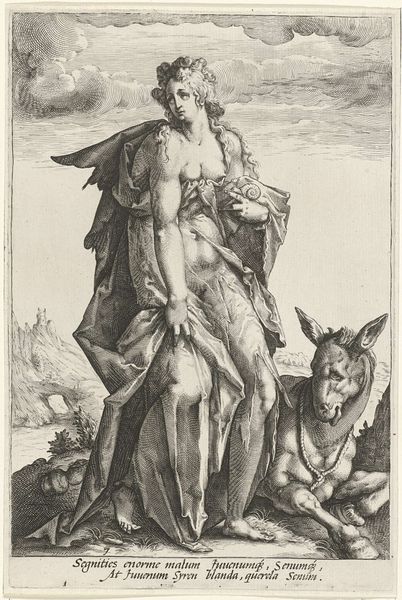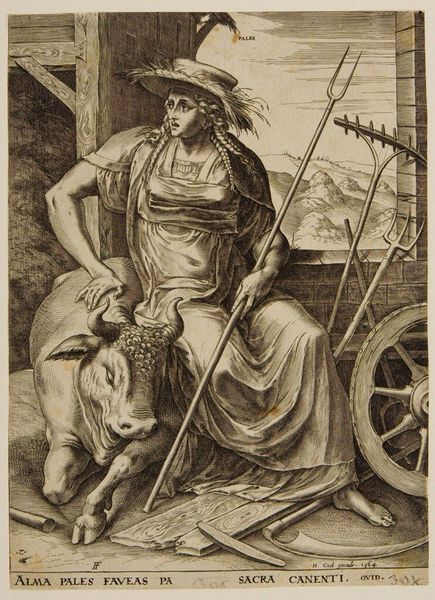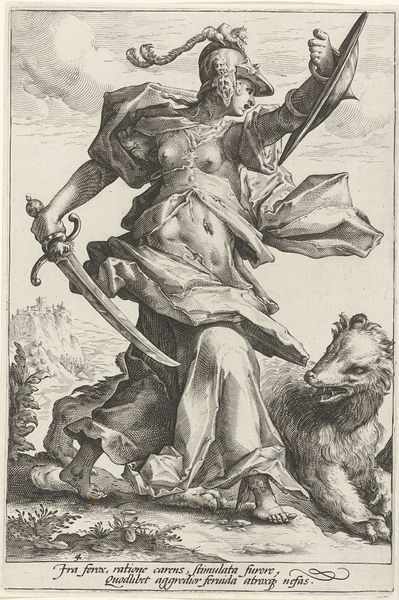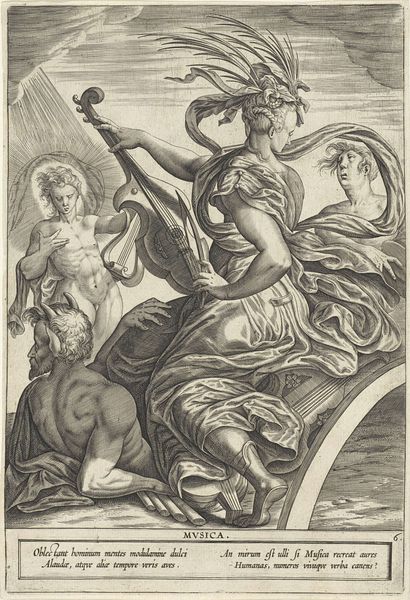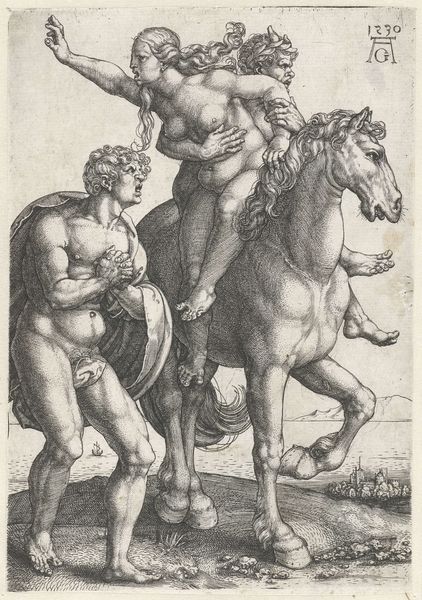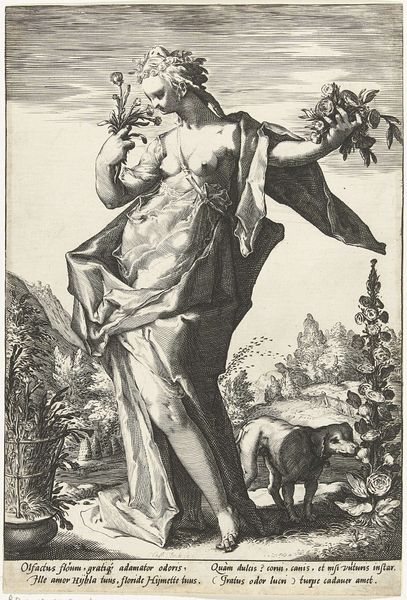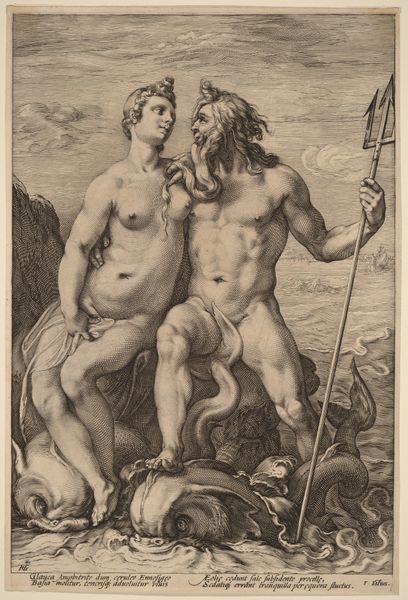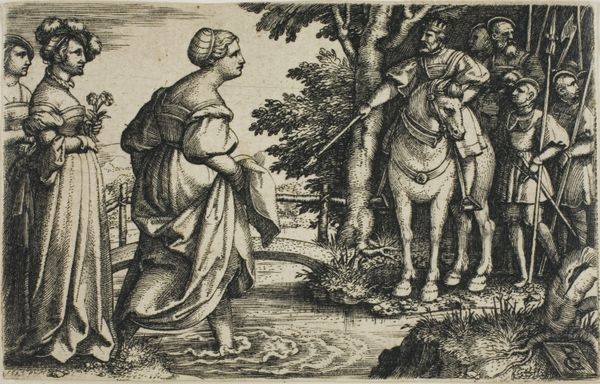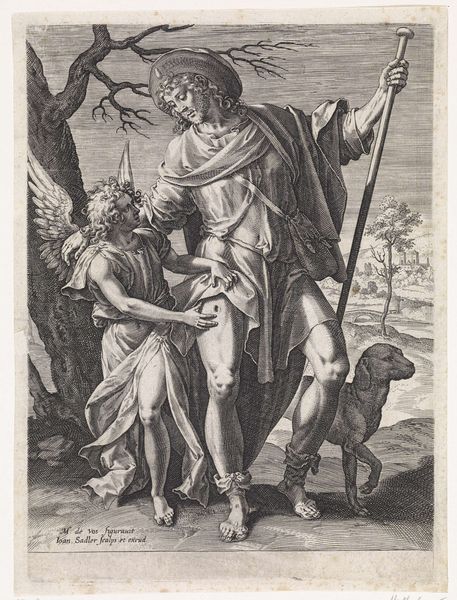
painting, oil-paint
#
painting
#
oil-paint
#
landscape
#
figuration
#
oil painting
#
mythology
#
italian-renaissance
Copyright: Public Domain: Artvee
Curator: Here we have Sandro Botticelli's oil on canvas painting, "Pallas and the Centaur," created around 1480 to 1485. What is your initial impression, Editor? Editor: My first thought is... stillness. The woman's placid face, the muted colors, and even the centaur's subdued posture create this sense of calm. But under that stillness, there’s something unsettled, like a held breath. Curator: Precisely. The painting emerged during a turbulent time in Florentine history. The Pazzi conspiracy against the Medici family had just occurred. So, what does this mean in relation to its meaning? Editor: I see it almost as an internal battle depicted through classical figures. The wild, untamed centaur representing raw emotion or instinct being subdued or guided by reason embodied in the figure of Pallas Athena, she is grace and serenity. Curator: Exactly! There’s also the loaded Medici symbolism; Pallas embodies wisdom and civilization and in a literal sense refers back to the rule of Lorenzo de Medici, as the figure of Pallas is wearing the Medici emblem on her dress. The broken bow in the centaur's grasp tells us about it too, signifying surrender and an ending to conflict. Editor: Right, the broken bow. Almost like she’s petting away his anger. The backdrop even mirrors this dualism. It moves from craggy rocks on one side to an even landscape, perhaps highlighting civilization as you said. Curator: And it may serve a lesson, or reminder, about the need for reason to overcome impulsive or aggressive behaviors, something deeply relevant during Lorenzo de Medici’s attempts to restore peace and stability to Florence at the time. Editor: I love how art can speak across centuries, these figures take a whole new significance when knowing its history! That's how it is still so impactful even today. Curator: I agree. By connecting it back to its social and historical moment, "Pallas and the Centaur" transforms from an idyllic image into a political statement, offering its 15th-century audience as well as us now. Editor: It is pretty fantastic, like witnessing the resolution of conflict rendered in oils. Curator: Indeed! "Pallas and the Centaur" isn't simply a pretty picture, it's a fascinating lens through which we can view both artistic mastery, Renaissance politics, and history. Editor: Absolutely. It prompts questions and creates a conversation not only about Botticelli's intention, but about history, culture, and art’s purpose itself.
Comments
No comments
Be the first to comment and join the conversation on the ultimate creative platform.
